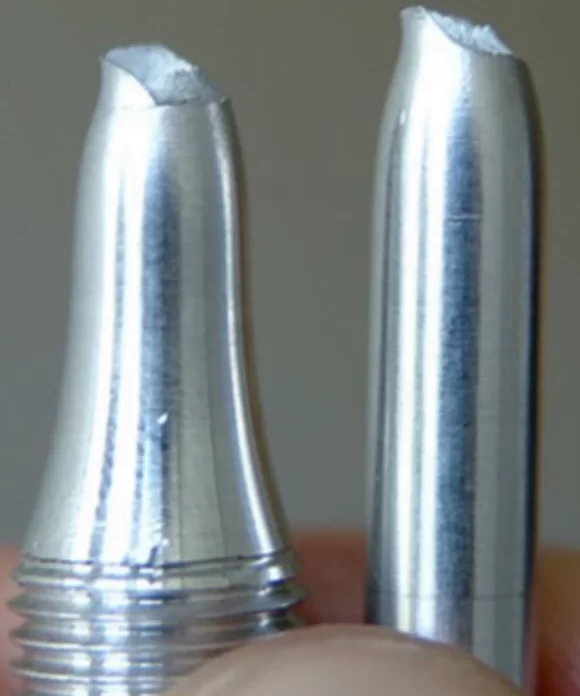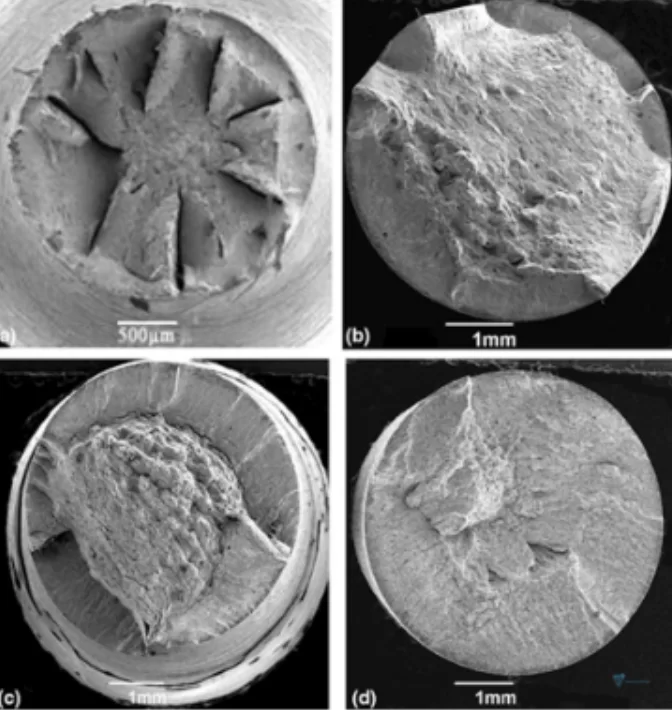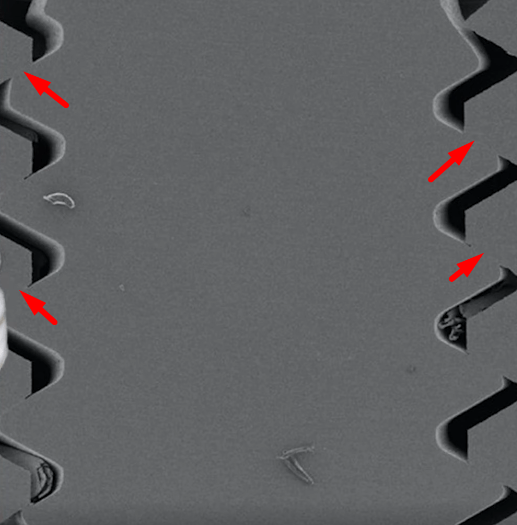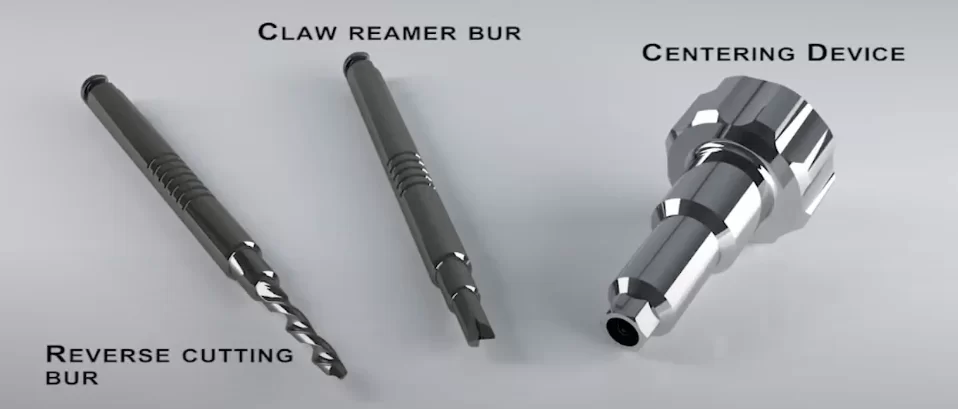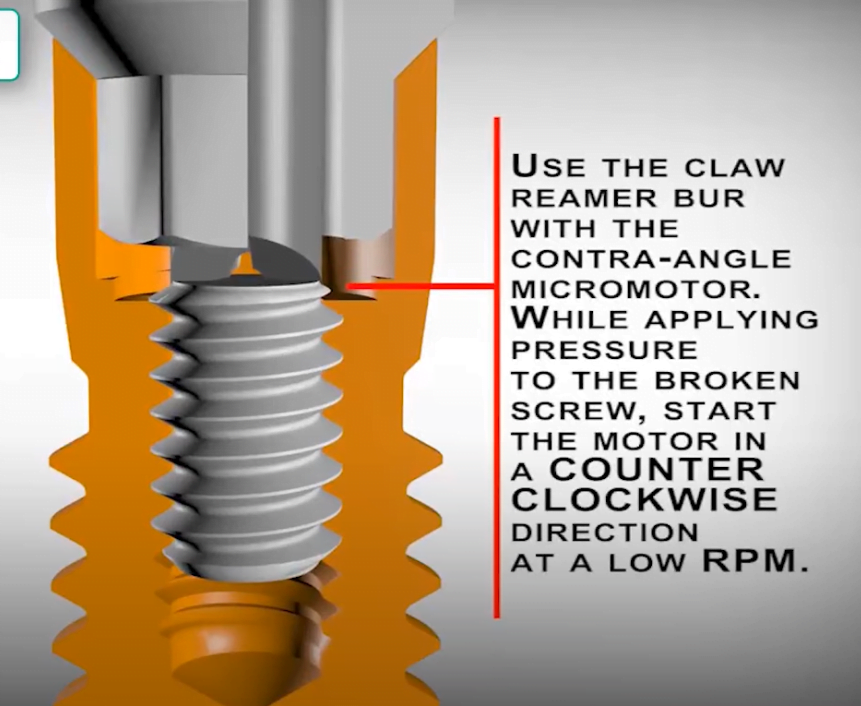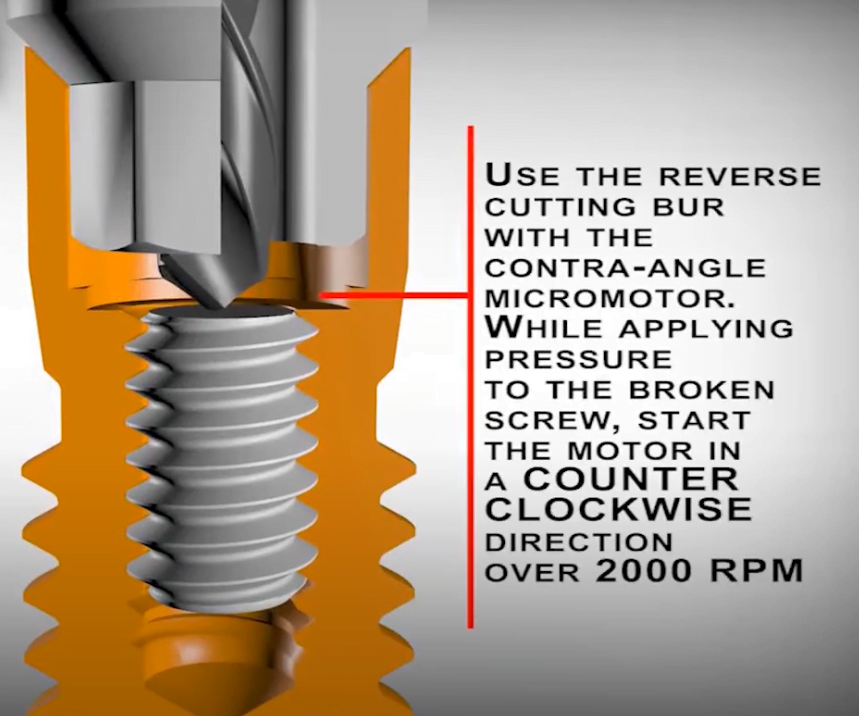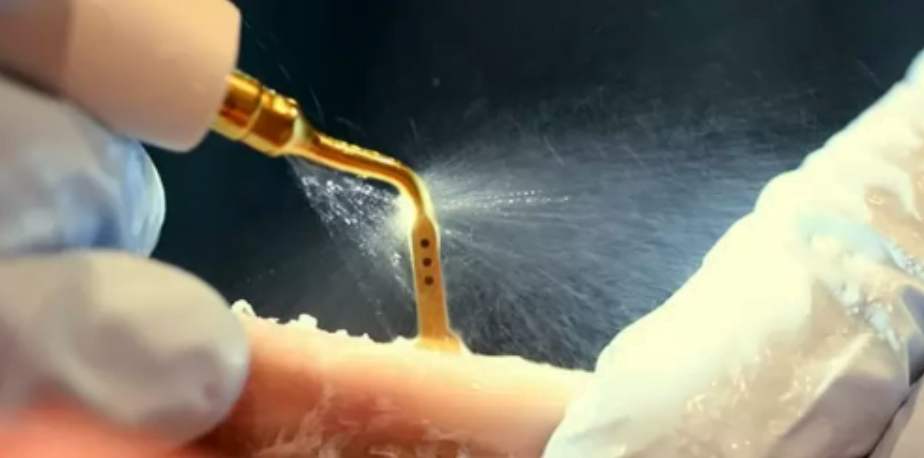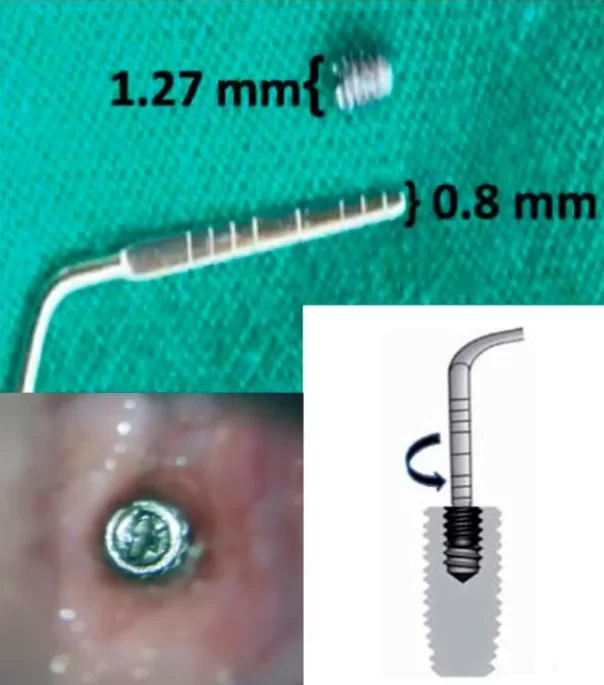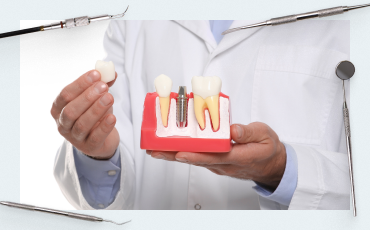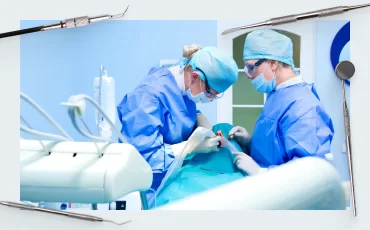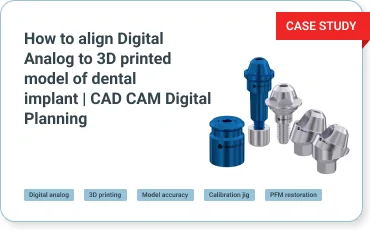How to remove a broken screw from a dental implant: a practical guide for dentists
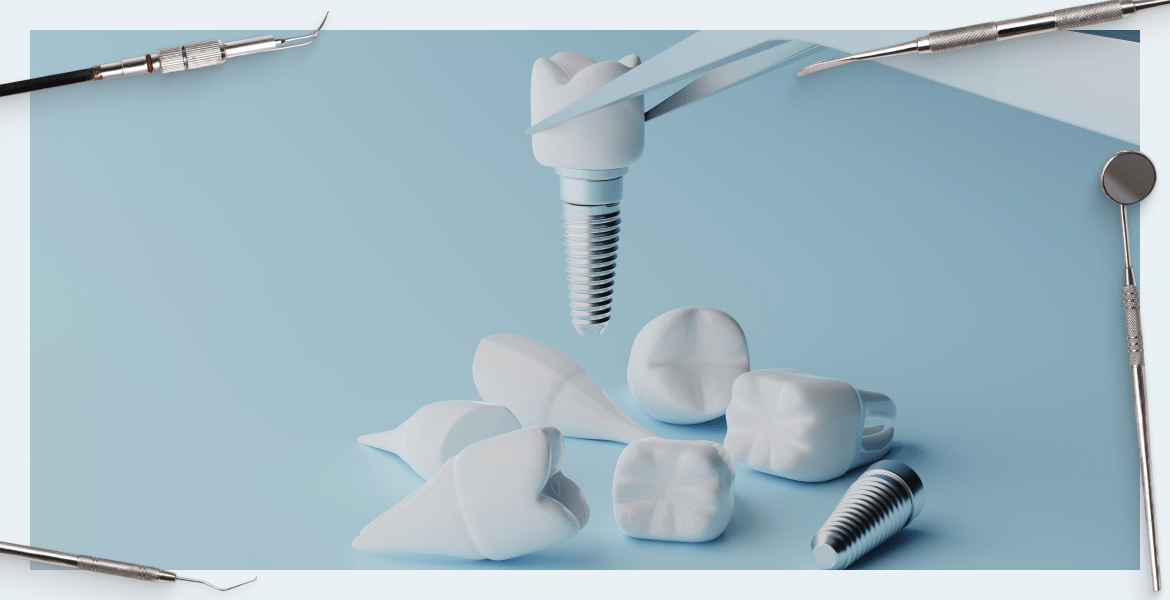
Imagine you’ve just completed a dental implant procedure, and as you tighten the last screw, it suddenly breaks, leaving the broken piece inside the implant. Panic sets in as questions flash through your mind: how to fix everything, how to explain to the patient. In fact, if the screw broke immediately during installation, it’s not the most difficult case. Extracting the broken implant screw is most likely going to be easy. It’s more complicated if the patient comes in with a crown in hand. It’s preferable if the patient hasn’t attempted to remove the fragment themselves. If the patient has jammed the broken piece, a special instrument with a reverse drill will be necessary.
However, quite often, the broken screw can be removed with simple improvised tools. And this can help avoid dental implant complications.We have previously published an article with similar content, which also offers advice on extracting broken screws, research results, and statistics on the declining number of implant screw failures over time. But since then, our colleagues have shared new original methods of implant screw extraction that we were unaware of at the time of the previous article’s publication.
In which condition is the broken screw fragment in the implant most often found
In this practical guide, we will explore various methods of extracting broken screws from dental implants, but first, let’s delve into some theory. Let’s explore what happens to the screw after it breaks.
The surface of the screw where the break occurred
Most often, screws break due to excessive tensile stress, which causes the screw body to elongate, decrease in diameter, and then rupture. Therefore, the broken screw fragment that remains inside the implant has a rough surface with numerous bumps, chips, and irregularities, as shown in the image below.
And this is good news because it is easier to grip and unscrew the broken dental implant screw from such a surface.
>>> Try our Screw Retained Restoration Trial Kit for just $0.99
Tension on the thread turns
The abutment-holding screw is in a stretched state. The main load is borne by the thread turns in the lower third of the screw. The direction of forces and contact points are shown by red arrows in the illustration below.
When the screw breaks, the tensile forces disappear, and the fragment bounces slightly downward. The tight contact weakens, so the fragment is often mobile and easily slides along the threads. And this is good news because extracting the broken implant screw will not require significant effort. Unfortunately, there are cases when the fragment gets jammed, making it more difficult to remove. But in most cases, removing a broken screw is easier than it may seem at first glance.
Implant screw removal methods
When we approach the removal of broken screws, it is important to understand the condition of the fragment. The factors that led to the breakage are also important. Excessive torque, manufacturing defects, or even simple misuse can lead to a stripped abutment screw. Therefore, each case must be analyzed to avoid such problems in the future. For now, the primary goal is to remove the broken screw without damaging the implant itself. A dental implant fracture is a very serious problem, and surgery to remove the implant from the bone tissue is unavoidable.
However, that is the topic of another article. For now, let’s look at methods for extracting a broken implant screw. Remember that in all cases, you should use binocular glasses with at least five times magnification, or better yet, work through a microscope.
>>> Elevate your dental practice with Uniqa Dental’s high-quality implants
- Special kit for removing dental implant screws. We intentionally started with an option that guarantees a solution to the problem.
The set includes a centering sleeve that is fixed to the end of the implant and several types of working tools. More often, a burr with sharp edges is used, which grips the rough surface of the fragment and allows it to be removed, see the illustration below.
But if the fragment is angled, a reverse drill may be needed. It works through the same centering sleeve that is included in the kit for removing the dental implant screw. The drill rotates in the opposite direction of the screw thread. The drill is immersed in the fragment’s body, and eventually, sufficient grip is established between the drill and the fragment to unscrew and remove it together with the drill.
In most cases, it is possible to keep the implant’s internal interface intact.
A kit for removing broken screws is an excellent option; however, it may not always be available in the dental office, and the patient may already be in the chair waiting for treatment. Therefore, let’s consider other options for removing broken abutment screws.
>>> Upgrade to Robust and Durable Implant Screws - The simplest way is to use a wooden stick from a cotton swab. You need to break the stick, and sharp splinters will form on its surface, which can work like claws. This is very similar to the action of a claw reamer bur from a specialized kit. For better grip, dip the tip in water for a few seconds. You also need to apply a drop of denture cleaning solution into the implant hole. This will improve sliding and loosen the resistance of debris that may have entered the implant shaft and blocked the broken screw fragment. Then, insert the wooden stick into the implant hole so that it catches the broken screw fragment and rotate counterclockwise to remove the fragment from the implant.
- In addition to a wooden stick, you can try to remove the broken screw fragment with a sharp dental probe or a sharpened flat periodontal probe. If the fragment is movable, you can rotate it gently until it comes out of the thread, and then remove the fragment with a dental aspirator. Due to limited space in the implant hole, it may not be possible to grip the broken screw with forceps. The aspirator creates a vacuum and pulls out the fragment.
>>> Experience the Difference with Our High-Quality Dental Implants - The next method is suitable for more difficult cases when it is not possible to grip and unscrew the broken screw. For this, a periodontal probe, also known as an endoscopic explorer, is also needed. Its tip should be sharpened in such a way that it resembles the slot of a flathead screwdriver. Next, a cut should be made on the end of the stuck screw. An ultrasonic piezotome bur with the thinnest nozzle is suitable for this. There are no rotating parts here, so the risk of damaging the internal interface of the implant is minimal.
Before making a groove on the broken screw, try to loosen the fragment by vibration and unscrew it with a probe. If this does not work, make a deep and even groove on the screw where the tip of a homemade screwdriver can fit. An example of a successful removal of an implant abutment screw is shown in the illustration below.
To avoid issues with broken screws, opt for high-quality implants, abutments, and clinical screws from reputable manufacturers. Pay attention to the material used for their production. Screws made from clinically pure Grade 4 titanium often break, so it’s recommended to choose abutments and clinical screws made from a titanium alloy with vanadium and aluminum, such as Grade 5, or even better, Grade 23, which are more ductile and resilient compared to previous alloys, and have almost no cases of screw breakage. That’s why Uniqa Dental chose Grade 23 alloy for manufacturing all implant systems.
>>> Discover Our Premium Grade 23 Titanium Alloy Abutments
Equipment and tools to help you cope with the removal of a broken abutment screw
| Equipment | Purpose | Note |
| A wooden cotton swab stick. | Create an improvised tool for loosening and extracting a broken screw. | The multitude of sharp wood splinters provide good contact with the rough surface of the broken screw. |
| Denture cleaning solution or lubricant for a drill. | To clean and loosen any debris that may be blocking the broken screw in place. | Recommended for all extraction methods. |
| Dental implant screw removal kit. | A set of specialized tools designed for removing broken screws. | Will help even with very difficult cases. |
| Dental probe or endo explorer. | Make a homemade screwdriver to grip and unscrew the broken screw fragment, or grip and unscrew the screw fragment if it is without tension. | Used in conjunction with an ultrasonic piezotome. |
| Ultrasonic drill. | Create a slot for a screwdriver at the end of the broken screw fragment. | Used in conjunction with a homemade screwdriver. |
| Microscope or binocular glasses.(5x magnification or more) | To provide magnification and improve visibility during the screw removal process. | All methods. |
| Dental aspirator. | To remove the freed fragment that cannot be picked up by forceps or a probe. | If the fragment rotates freely, it is used in conjunction with a broken cotton swab or probe. |
| Piezo unit | To create vibration on the top of the screw to help loosen it. | This can help in cases where the fragment is stuck. |
| An electrosurgical unit. | To stop bleeding from a damaged gum. | This is needed in case of severe bleeding that hinders the removal of a broken abutment screw. |
Mistakes in the extraction of the implant screw
Let’s make it clear that all the methods discussed are only suitable for a so-called “clean” fracture of the implant screw. Cases where the thread is stripped or the internal implant interface is damaged were not covered here. This is a special case of dental implant complications, and often the entire implant must be removed to avoid damaging the internal interface and exacerbating the situation. Be careful with the following instruments and operations:
- using a drill to free a stuck fragment is not recommended because it can easily catch and damage the thread inside the implant;
- careless use of a probe: do not try to lift the fragment by placing the probe between the internal thread of the implant and the fragment. Also, do not press too hard on the fragment as it may twist and become stuck.
If you have any issues with abutments, screws, or implants, you can Contact our Uniqa Dental Personal Manager page. Through this page, you can order any components you need to replace broken components from other manufacturers.
FAQ Section: How to Remove a Broken Screw from a Dental Implant
Q1: What causes screws to break in dental implants?
A1: The most common causes of broken screws in dental implants include excessive torque, manufacturing defects, improper handling, or using low-quality materials. Additionally, wear and tear over time can also contribute to screw breakage.
Q2: Can a broken screw damage the dental implant or surrounding tissue?
A2: If not handled properly, a broken screw can potentially damage the dental implant or surrounding tissue. However, by following the correct techniques and using appropriate tools, you can minimize the risk of causing any harm.
Q3: Are all broken screw removal methods appropriate for every case?
A3: No, each broken screw scenario is unique, and the most suitable method may vary depending on factors such as the screw’s position, depth, and the dentist’s level of expertise. It is essential to assess each case individually and choose the most appropriate technique for the specific situation.
Q4: How can I prevent screw breakage in dental implant procedures?
A4: To minimize the risk of screw breakage, make sure that you use high-quality materials, such as Grade 23 titanium alloy, which is used by Uniqa Dental. Follow the manufacturer’s recommendations for torque and handle the components with care. Regular technical maintenance and monitoring of the implant can also help prevent possible problems.
>>> Click Here to Explore Our Full Range of Dental Implant Solutions
Q5: What should I do if the broken screw is not accessible using the methods described in this article?
A5: If the broken screw is not accessible using the methods mentioned, it is advisable to consult with a specialist or a colleague who has experience in handling more complex cases. In some instances, specialized equipment or techniques may be necessary to safely and effectively remove the broken screw.

